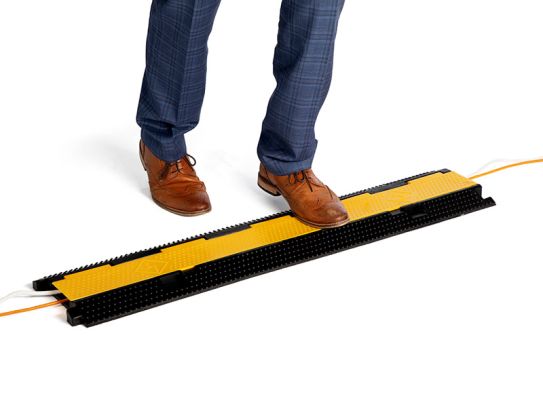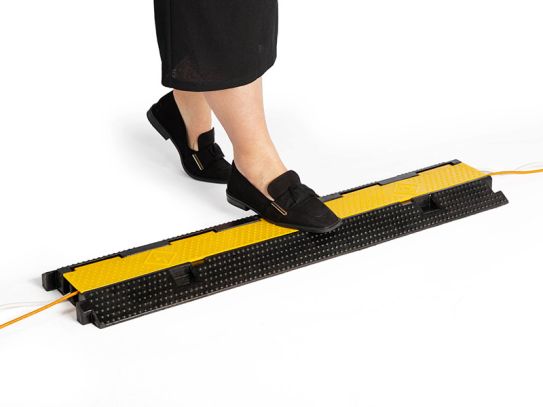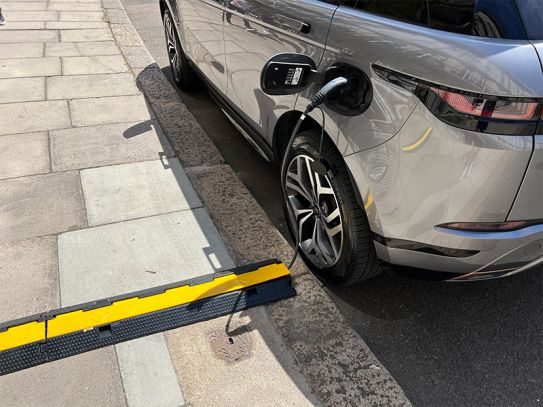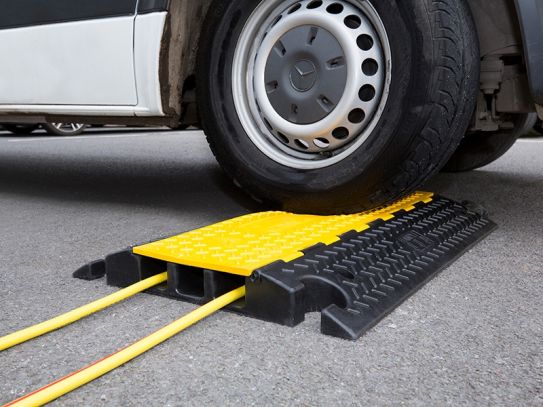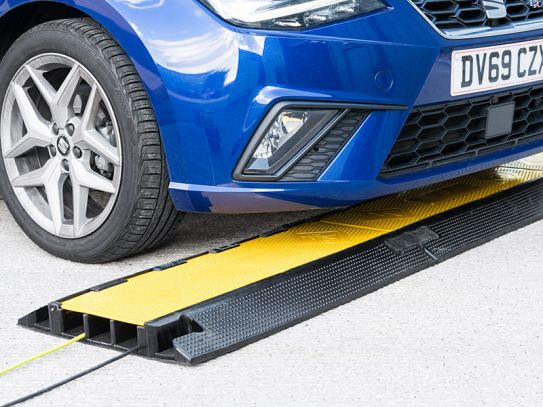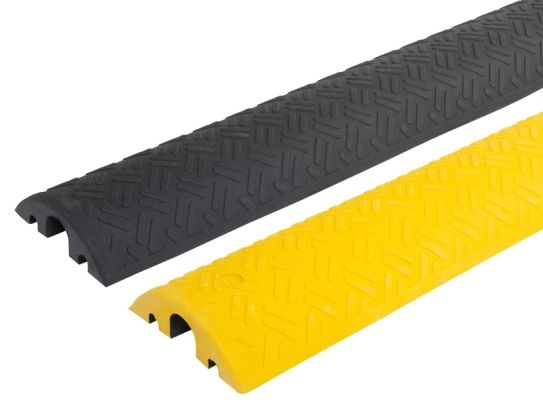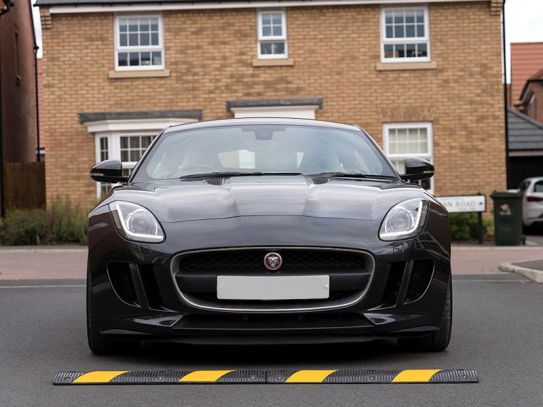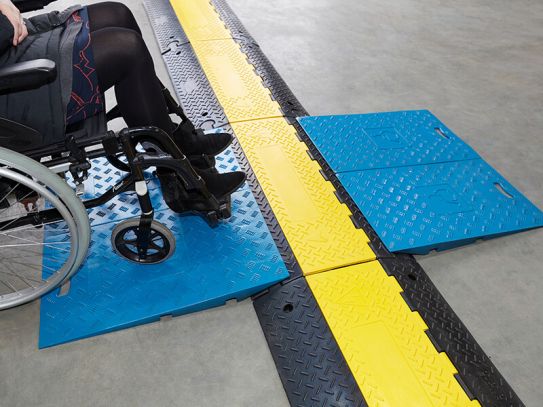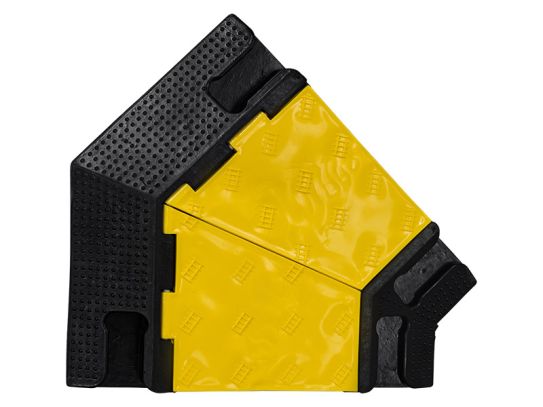Outdoor Cable Protectors
Keep Your Cables Safe and Functional with Our Outdoor Cable Protectors
Are your outdoor cables constantly at risk of damage from weather, animals, and other hazards? Protect them with one of our sturdy outdoor cable protectors! Made from durable materials, our protectors will keep your cables safe and functional, no matter the environment. Its modular design allows you to create a custom protective pathway for your cables. Don't let outdoor conditions put your cables at risk – buy one of our outdoor cable protectors today!
What Is an Outdoor Cable Protector?
An outdoor cable protector is a device designed to protect cables and cords from damage, particularly in outdoor environments. This can be especially important for cables that are exposed to the elements, such as those used for outdoor lighting or audio systems. Outdoor cable protectors typically consist of a durable rubber or plastic material that is placed over the cables and helps to protect them from being damaged by things like water, sunlight, and foot traffic. Some cable protectors are also designed to be used in areas where there is a risk of vehicles driving over the cables, and they may be made with a thicker and more durable material to provide additional protection in these cases.
What Are Some Common Uses for an Outdoor Cable Protector?
Some common uses for an outdoor cable protector include protecting cables for outdoor lighting systems, audio systems, and electrical outlets. They can also be used to protect cables for temporary events, such as concerts or festivals, where cables may be laid out on the ground and exposed to potential damage. Additionally, outdoor cable protectors can be used in construction sites or other industrial environments where cables may be at risk of being damaged by heavy equipment or other vehicles. In general, any situation where cables are being used outdoors and are at risk of being damaged can benefit from the use of an outdoor cable protector.
What Are the Different Types of Outdoor Cable Protectors
There are several different types of outdoor cable protectors available on the market. Some are designed specifically for use with certain types of cables, such as those used for electrical outlets or audio systems. Others are more general-purpose and can be used with any type of outdoor cable. Some common types of outdoor cable protectors include:
- Single-channel cable protectors: These are the most basic type of cable protector, and consist of a single channel or groove that is designed to hold a single cable. They are often made from rubber or plastic and can be used to protect cables from water, sunlight, and other types of damage.
- Multi-channel cable protectors: As the name suggests, these cable protectors have multiple channels or grooves that are designed to hold multiple cables. This can be useful for protecting a larger number of cables, or for protecting cables of different sizes.
- Heavy-duty cable protectors: These cable protectors are designed for use in environments where there is a risk of heavy vehicles driving over the cables. They are typically made from a thicker and more durable material, such as rubber or steel, and can withstand the weight of vehicles without being damaged.
- High-visibility cable protectors: These cable protectors are designed to be easily visible, typically by using bright colours or reflective materials. This can be useful in environments where cables may be difficult to see, such as in low light or crowded areas.
- Modular cable protectors: These cable protectors are designed to be easily connected together to create longer runs of protection. This can be useful for protecting cables over longer distances, or for creating custom configurations to fit the specific needs of a particular environment.
What Are the Key Features to Consider When Choosing an Outdoor Cable Protector?
When choosing an outdoor cable protector, there are several key features to consider. These can help ensure that you choose a cable protector that is well-suited to your specific needs and will provide the necessary level of protection for your cables. Some key features to consider include:
- Material: Outdoor cable protectors are typically made from rubber or plastic, but some may also be made from other materials, such as steel or aluminium. Consider the type of environment in which the cable protector will be used, as well as the types of cables that it will be protecting, to determine the best material for your needs.
- Number of channels: As mentioned earlier, outdoor cable protectors can have either a single channel or multiple channels. Consider the number of cables that you need to protect, as well as the size of those cables, to determine how many channels you will need.
- Load capacity: If you are using the cable protector in an environment where there is a risk of heavy vehicles driving over it, it's important to choose a cable protector with a high load capacity. This will ensure that the cable protector can withstand the weight of the vehicles without being damaged.
- Visibility: In some cases, it may be important for the cable protector to be easily visible. This can be particularly important in low light or crowded environments, where cables may be difficult to see. Look for cable protectors that are brightly colored or have reflective materials to increase their visibility.
- Modularity: If you need to protect cables over a long distance, or if you need to create a custom configuration for your cables, it can be helpful to choose a cable protector that is modular. This will allow you to easily connect multiple cable protectors together to create the desired length and configuration.
How Do I Maintain My Outdoor Cable Protector?
To maintain your outdoor cable protector and ensure that it continues to provide effective protection for your cables, there are a few steps you can take. These include:
- Regularly inspect the cable protector for signs of damage or wear. This can include things like cracks, tears, or other types of damage to the material. If you notice any damage, replace the cable protector as necessary.
- Keep the cable protector clean and free of debris. This can help prevent damage to the cables and ensure that the cable protector continues to function properly. Use a soft brush or cloth to gently clean the cable protector, and remove any debris that may be stuck in the channels or grooves.
- Store the cable protector properly when it is not in use. This can help prevent damage and extend the life of the cable protector. Store the cable protector in a cool, dry place, and avoid exposing it to extreme temperatures or direct sunlight for extended periods of time.
- Follow the manufacturer's instructions for any maintenance or repair tasks. If you need to repair or replace any part of the cable protector, make sure to follow the manufacturer's instructions to ensure that it is done properly and will not compromise the cable protector's effectiveness.
By following these steps, you can help ensure that your outdoor cable protector continues to provide effective protection for your cables and keeps them safe from damage.
Are There Any Special Considerations When Choosing a Cable Protector for a Particular Environment?
Yes, there are several things to consider when choosing an outdoor cable protector for a particular environment or application. Some of the key factors to keep in mind include:
- The type and number of cables that need to be protected: Different cable protectors are designed to accommodate different numbers and types of cables. Be sure to choose a cable protector that is suitable for the specific cables you need to protect.
- The environment in which the cable protector will be used: Different cable protectors are designed to withstand different types of environments. For example, some cable protectors may be more resistant to water, while others may be better able to withstand extreme temperatures. Be sure to choose a cable protector that is suitable for the specific environment in which it will be used.
- The type of traffic that the cable protector will need to withstand: Different cable protectors are designed to withstand different levels of traffic. For example, some cable protectors are suitable for pedestrian traffic, while others are designed for use in areas with heavy vehicle traffic. Be sure to choose a cable protector that is capable of handling the type and level of traffic it will encounter.
- The length and layout of the cable route: Different cable protectors are designed to be used in different configurations. Be sure to choose a cable protector that is suitable for the specific length and layout of the cable route.
- Any additional features or requirements: Some cable protectors may have additional features or requirements that are important for certain applications. For example, some cable protectors may have warning stripes or reflective materials to improve visibility, or may be designed to be easily connected to other cable protectors to create a longer protective pathway. Consider any additional features or requirements that may be important for your specific application when choosing a cable protector.
Are There Any EU or UK Standards That Affect the Outdoor Cable Protector?
Yes, there are several EU and UK standards that apply to outdoor cable protectors. These standards help to ensure that cable protectors are safe, effective, and suitable for their intended use.
In the EU, cable protectors are regulated by the European Committee for Standardization (CEN). The relevant standard for cable protectors is EN 61340-5-1:2017, which covers the performance requirements and test methods for cable protectors. This standard specifies the requirements for various aspects of cable protectors, including their mechanical, electrical, and environmental performance.
In the UK, cable protectors are also subject to several relevant standards. For example, the British Standard BS EN 61340-5-1:2017 is equivalent to the EU standard mentioned above, and covers the performance requirements and test methods for cable protectors. Additionally, the British Standard BS 7671:2018 (IET Wiring Regulations) covers the electrical safety requirements for cable protectors. This standard specifies the requirements for the safe installation, inspection, and testing of cable protectors that are used with electrical cables.
It is important to note that compliance with these standards is not mandatory, but it is highly recommended. Using a cable protector that meets these standards can help to ensure that it is safe and effective for its intended use.
